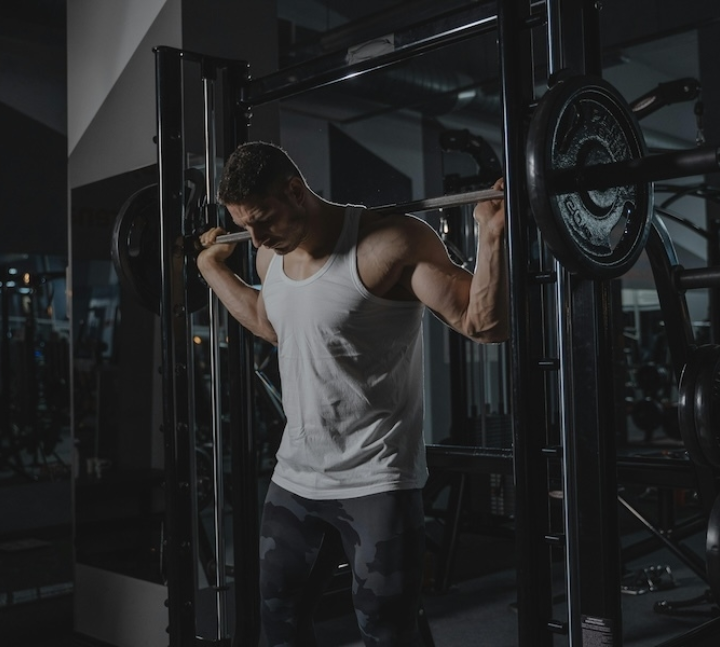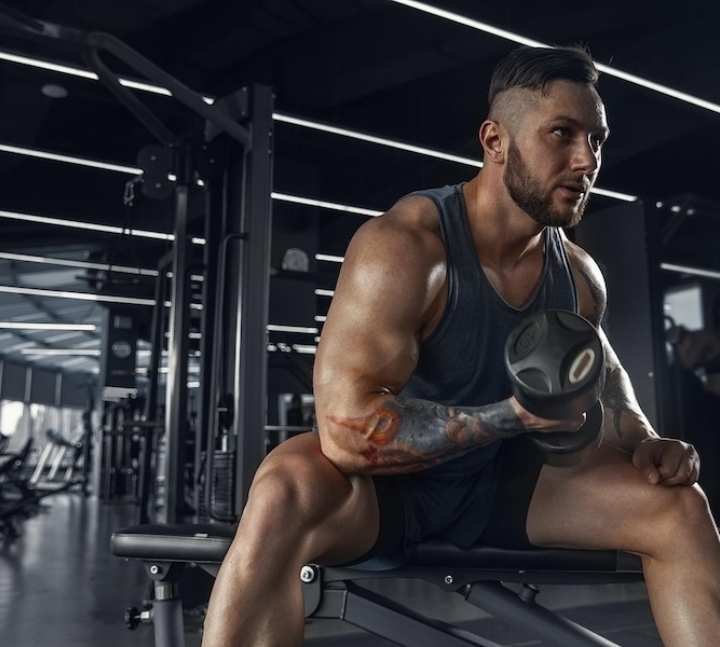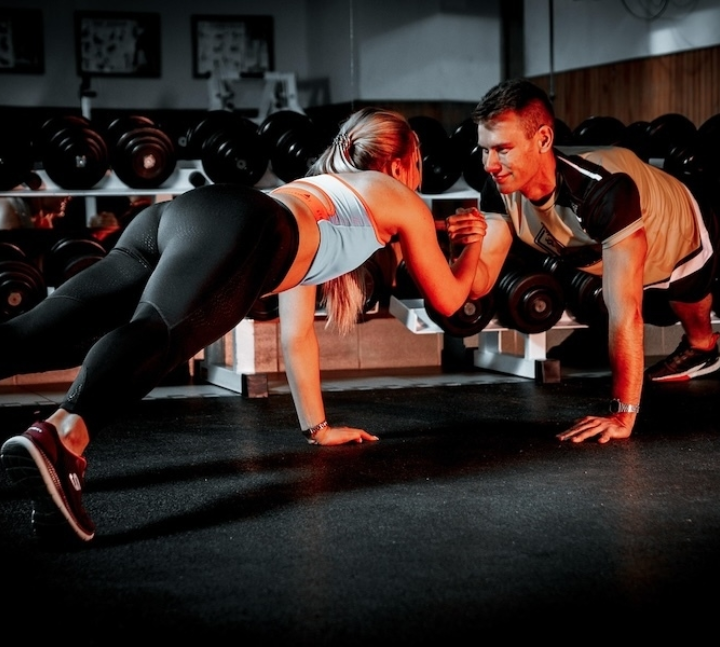Exercise
Dumbell Wrist Curl (Over Bench)
How to Perform - Dumbell Wrist Curl (Over Bench)
- Position a bench in front of you and kneel with the front of your forearms resting on the bench, palms facing down and wrists extending beyond the edge.
- Hold a dumbbell in each hand with your wrists in a neutral position, ensuring your elbows are stable and forearms are firmly against the bench.
- Keeping your forearms stationary on the bench, slowly lower the dumbbells by extending your wrists downward as far as comfortably possible. Inhale during this lowering phase.
- Pause briefly at the bottom position, feeling a stretch in your forearm extensors while maintaining stability in your upper arms.
- Exhale as you curl the dumbbells upward by contracting your forearm extensors and flexing your wrists, lifting only through wrist movement.
- Continue the curling motion until your hands are slightly above parallel with your forearms, maintaining tension in the target muscles.
- Hold the contracted position momentarily, focusing on squeezing your forearm extensors while keeping your shoulders relaxed.
- Lower the dumbbells back to the starting position with control, maintaining the tension throughout the movement.
Important information
- Select a lighter weight than you might expect as wrist extensors are typically weaker than flexors and can be easily strained.
- Keep your forearms firmly pressed against the bench throughout the exercise to isolate the wrist movement and prevent using momentum.
- Make sure your wrists move through their full range of motion without compromising form or using excessive weight.
- If you experience any wrist pain (not normal muscle fatigue), stop the exercise and consider reducing the weight or checking your form.
Primary Muscles
Muscle Groups
Mechanic
Risk Areas
Built for progress
Take the guesswork out of training
Create personalized AI-powered workout plans that evolve with you. Train smarter, track every rep and keep moving forward, one workout at a time.






The dumbbell wrist curl over a bench is a highly effective isolation movement that targets the forearm flexors with remarkable precision. This intermediate-level exercise has long been a staple in bodybuilding routines for developing those signature forearm muscles that not only enhance aesthetic appeal but also contribute significantly to overall grip strength and functional performance. Unlike compound movements that engage multiple muscle groups simultaneously, this focused exercise allows you to zero in on the forearms specifically, making it invaluable for bodybuilders seeking balanced physique development. The flexor muscles targeted during this movement are crucial for activities ranging from heavy deadlifts to everyday tasks requiring grip stability.
For strength athletes and bodybuilders alike, well-developed forearms serve both practical and visual purposes. Functionally, stronger forearms translate to improved performance in pulling exercises and enhanced wrist stability during pressing movements. Aesthetically, they complete the arm's appearance, preventing the disconnected look of developed biceps and triceps paired with underdeveloped forearms. The beauty of this intermediate exercise lies in its adaptability. As your forearm strength progresses, you can easily increase the challenge by incrementing the dumbbell weight. This progressive overload principle is fundamental to continuing strength gains and muscle hypertrophy in the forearm region. Consistency with this exercise typically yields noticeable results within weeks, with many bodybuilders reporting improved vascularity and definition along the forearm muscles. The forearms respond particularly well to dedicated training, often showing visible changes more quickly than larger muscle groups.
Including this movement in your routine 2-3 times weekly provides sufficient stimulus for growth without overtraining these frequently used muscles. For optimal results, pair it with complementary exercises like reverse wrist curls to ensure balanced forearm development. Remember that forearm strength represents a crucial link in your body's kinetic chain, supporting performance across virtually all upper body movements.
FAQ - Dumbell Wrist Curl (Over Bench)
Dumbbell wrist curls primarily target the forearm flexors (flexor carpi radialis, flexor carpi ulnaris, and palmaris longus). These muscles are responsible for wrist flexion and contribute significantly to grip strength and forearm development.
Include wrist curls 2-3 times weekly with at least 48 hours between sessions to allow for adequate recovery. Since forearms are involved in many daily activities and other exercises, avoid training them the day before heavy pulling workouts.
Avoid hyperextending your lower back at the top of the bridge position, which puts unnecessary strain on your spine. Don't let your knees collapse inward during the movement, and ensure you're driving through your heels rather than your toes to properly engage your glutes.
To make it easier, reduce the weight or switch to a half-kneeling position (one knee up). To increase difficulty, add more weight, slow down the eccentric (lowering) phase to 3-4 seconds, or progress to a tall kneeling position with knees close together to challenge core stability further.
Yes, stronger forearms from regular wrist curl training directly improve your grip strength for deadlifts, rows, and pull-ups. The increased wrist stability also benefits pressing movements and carries over to sports requiring forearm strength like rock climbing, tennis, and golf.








